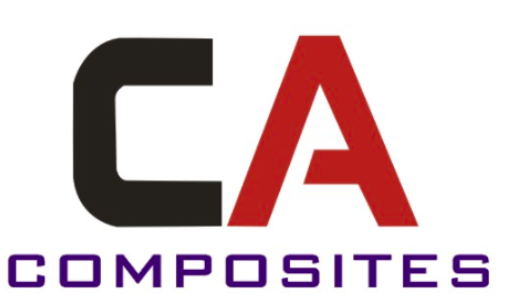Basalt fiber is made from extremely fine fibers of basalt, which is composed of the minerals plagioclase, pyroxene, and olivine. It is similar to fiberglass, having better physicomechanical properties than fiberglass, but being significantly cheaper than carbon fiber. It is used as a fireproof textile in the aerospace and automotive industries and can also be used as a composite to produce products such as camera tripods.
In this category, we supply the following products:
Basalt Fiber Fabric
Production of Basalt Fibers
The technology of production of BCF(Basalt Continuous Fiber) is a one-stage process: melting, homogenization of basalt and extraction of fibers. Basalt is heated only once. Further processing of BCF into materials is carried out using "cold technologies" with low energy costs.
Basalt fiber is made from a single material, crushed basalt, from a carefully chosen quarry source. Basalt of high acidity (over 46% silica content and low iron content is considered desirable for fiber production. Unlike with other composites, such as glass fiber, essentially no materials are added during its production. The basalt is simply washed and then melted.
The manufacture of basalt fiber requires the melting of the crushed and washed basalt rock at about 1,500 °C (2,730 °F). The molten rock is then extruded through small nozzles to produce continuous filaments of basalt fiber.
The basalt fibers typically have a filament diameter of between 10 and 20 μm which is far enough above the respiratory limit of 5 μm to make basalt fiber a suitable replacement for asbestos. They also have a high elastic modulus, resulting in high specific strength—three times that of steel. Thin fiber is usually used for textile applications mainly for production of woven fabric. Thicker fiber is used in filament winding, for example, for production of CNG cylinders or pipes. The thickest fiber is used for pultrusion, geogrid, unidirectional fabric, multiaxial fabric production and in form of chopped strand for concrete reinforcement. One of the most prospective applications for continuous basalt fiber and the most modern trend at the moment is production of basalt rebar that more and more substitutes traditional steel rebar on construction market.
Properties of Basalt Fibers
The table refers to the continuous basalt fiber specific producer. Data from all the manufacturers are different, the difference is sometimes very large values.
| Property | Value |
| Tensile strength | 2.8–3.1 gpa |
| Elastic modulus | 85–87 gpa |
| Elongation at break | 3.15% |
| Density | 2.67 g/cm³ |
Comparison with other materials
| Material | Density (g/cm³) |
Tensile strength (gpa) |
Specific strength | Elastic modulus (gpa) |
Specific modulus |
| Steel rebar rebar | 7.85 | 0.5 | 0.0637 | 210 | 26.8 |
| A-glass | 2.46 | 2.1 | 0.854 | 69 | 28 |
| C-glass | 2.46 | 2.5 | 1.02 | 69 | 28 |
| E-glass | 2.60 | 2.5 | 0.962 | 76 | 29.2 |
| S-2 glass | 2.49 | 4.83 | 1.94 | 97 | 39 |
| Silicon | 2.16 | 0.206-0.412 | 0.0954-0.191 | ||
| Quartz | 2.2 | 0.3438 | 0.156 | ||
| Carbon fiber (large) | 1.74 | 3.62 | 2.08 | 228 | 131 |
| Carbon fiber (medium) | 1.80 | 5.10 | 2.83 | 241 | 134 |
| Carbon fiber (small) | 1.80 | 6.21 | 3.45 | 297 | 165 |
| Kevlar K-29 | 1.44 | 3.62 | 2.51 | 41.4 | 28.7 |
| Kevlar K-149 | 1.47 | 3.48 | 2.37 | ||
| Polypropylene | 0.91 | 0.27-0.65 | 0.297-0.714 | 38 | 41.8 |
| Polyacrylonitrile | 1.18 | 0.50-0.91 | 0.424-0.771 | 75 | 63.6 |
| Basalt fiber | 2.65 | 2.9-3.1 | 1.09-1.17 | 85-87 | 32.1-32.8 |
History of Basalt fiber
The first attempts to produce basalt fiber were made in the United States in 1923 by Paul Dhe who was granted U.S. Patent 1,462,446. These were further developed after World War II by researchers in the US, Europe and the Soviet Union especially for military and aerospace applications. Since declassification in 1995 basalt fibers have been used in a wider range of civilian applications.
Application of Basalt fiber
- Heat protection
- Friction materials
- Windmill blades
- Lamp posts
- Ship hulls
- Car bodies
- Sports equipment
- Speaker cones
- Cavity wall ties
- Rebar
- Load bearing profiles
- CNG cylinders and pipes
- Absorbent for oil spills
- Chopped strand for concrete reinforcement
- High pressure vessels (e.g. tanks and gas cylinders)
- Pultruded rebar for concrete reinforcement (e.g. for bridges and buildings)
